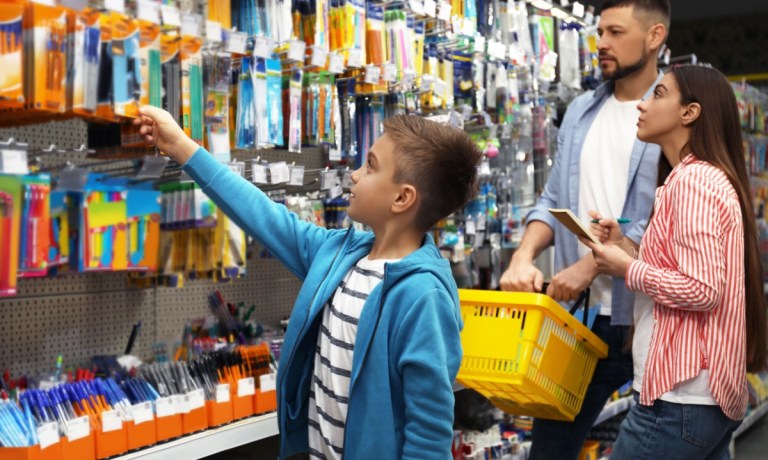As school season approaches, prompting parents to shell out hundreds of dollars, retail giants Amazon and Walmart are each vying to be shoppers’ go-to for their scholastic needs.
On Walmart’s earnings call last week, the company’s U.S. business’s president and CEO John Furner spoke to the back-to-school push that the company is making and the early success of these efforts.
“Back to school … started off strong [these] last couple weeks. … We have to continue to execute really well, clean up, come out of the season strong so that then we can move to the next holiday, which will be Labor Day,” Furner said. “… We focus on what we can control, we execute, we clean our inventory up, and then we move forward.”
He noted that about half of the retailer’s shoppers report continuing to have “a lot of shopping left to do,” suggesting further opportunity in the weeks ahead.
Amazon, for its part, is bringing in star power in its efforts to win consumers’ back-to-school spending. Last month, the company dropped an ad featuring comedian and actress Michelle Buteau advertising its back-to-school hub, which offers prices that smaller retailers would be hard pressed to compete with, such as 25-cent glue sticks and 49-cent packs of folders.
The opportunity here is significant. According to the National Retail Federation’s (NRF’s) latest annual report in July, families with children between elementary school and grade school expect they will shell out $874.68 on average on back-to-school clothing, shoes, supplies and electronics.
Advertisement: Scroll to Continue
Breaking that down, they expect to spend an average of $309.35 on electronics, $253.29 on clothing and accessories, $141.62 on school supplies and $170.43 on shoes — all categories that Amazon and Walmart sell.
In all these categories, Amazon is in the lead by a considerable margin, per data from the PYMNTS Intelligence report “Whole Paycheck Report: New Consumer Spend Data Finds Amazon Way Ahead of Walmart.” The study estimates each of the two retailers’ market shares in various categories. It draws insights from the companies’ earnings reports in conjunction with national data from the U.S. Census Bureau and Bureau of Economic Analysis.
Supplemental research from the report estimates that, as of Q4 of last year, Amazon held a 17% share of consumer spending on clothing and apparel, a 41% share of electronics spending and a 37% of sporting goods, hobby, music and book spending. Meanwhile, Walmart’s estimated share was approximately 6% in each of the three categories.
In fact, throughout the year, parents present a key demographic for retailers looking to win more of shoppers’ spending. The PYMNTS Intelligence report “The Last Transaction: Family Spending Habits Reveal Merchant Opportunities in Retail and Travel” shows that those who are married with children in their household typically spend more on retail products each month than consumers living in any other family structure.
With significant consumer dollars at stake and both companies vying for the top spot, the coming weeks will be crucial in determining which retail giant can capture the lion’s share of parents’ spending — setting the stage for further retail clashes as the holiday season approaches.
